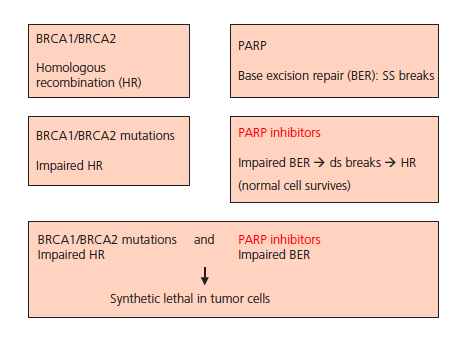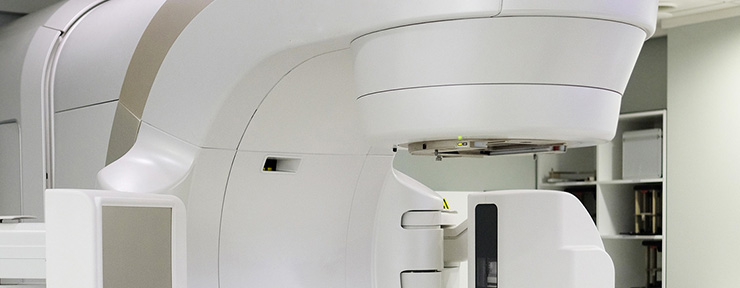 |
| Lauren Pecorino “Molecular Biology of Cancer -Mechanisms, Targets, and Therapeutics. Oxford University 2012 |
|
Synthetic lethality. Normal cells have functional DNA repair pathways so that they respond appropriately to damage by activating either pathway A or pathway B. There may also be an inappropriate pathway C that would incorrectly activate cell death in response to the damage, which is suppressed. In the presence of an inhibitor of pathway B the normal cell can still rely on pathway A for survival. In a tumour cell there may be a mutation or silencing of a component of pathway A, compromising its ability to process the damage. In this case the tumour is reliant on pathway B for survival so that when a pathway B inhibitor is applied the cell dies owing to either the persistence of DNA damage that can no longer be repaired or the activation of the inappropriate pathway C. When no external cytotoxic agent is applied and the combination of pathway A and pathway B inhibition is highly cytotoxic there is synthetic lethality; when the combination is less cytotoxic but confers hypersensitivity to low doses of a cytotoxic agent, this can be termed synthetic sickness. For example, the working hypothesis for the synthetic lethality of poly(ADP) ribose polymerase (PARP) inhibition (which inhibits base excision repair (BER)) in cells with defects in homologous recombination repair (HRR). When both BER and HRR are inactive not only does this mean that replication forks that collide with unrepaired single-strand breaks (SSBs) result in lesions that cannot be repaired (as this is usually repaired by HRR) but also that NHEJ becomes activated and contributes to their erroneous and lethal repair. |
1 Feb 2017

